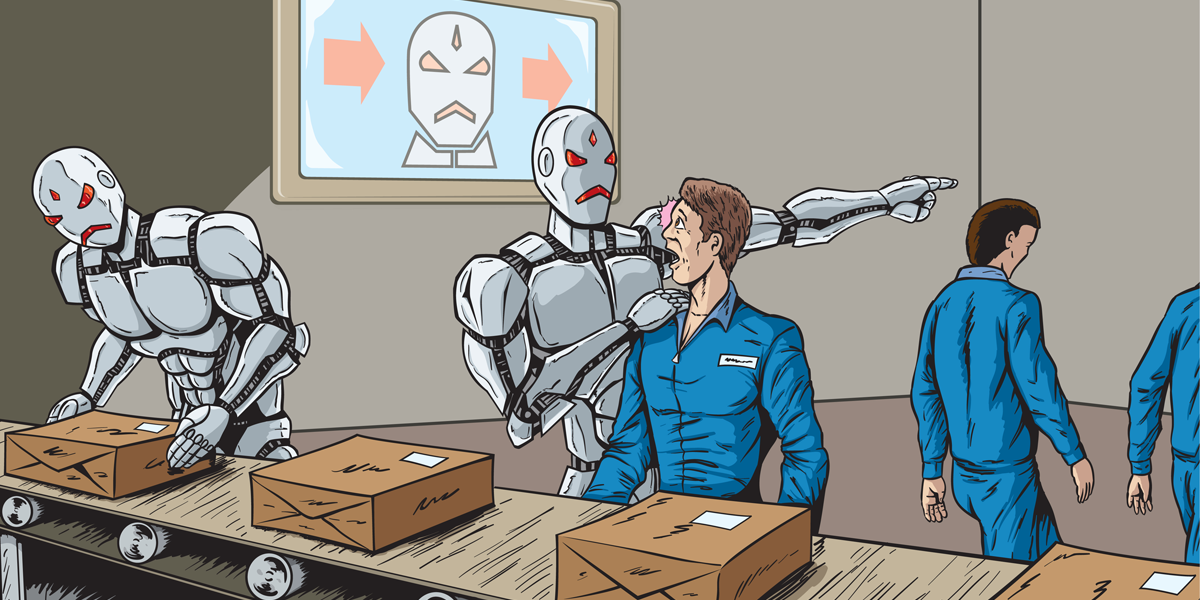With increasing automation around the world and robots taking over more and more jobs (Arntz, Gregory & Zierahn, 2016). Do humans still have jobs in 100 or 200 years, the chances are that all jobs will be taken over by automation and robots. Influential people in the IT business like Elon Musk, co-founder of Tesla and SpaceX, have publicly raised questions whether we should move to a society where everyone receives a universal basic income.
Where 20 years ago driving would’ve been an example where humans are superior, now it’s the cornerstone of advanced AI. For example, companies like Uber and Google have been using automated cars successfully for years. While some researchers seem to agree that automation will take over many jobs, others reason humans will always be needed for certain jobs (David, 2015). Particularly in high-skill jobs like education, law and medicine, humans seem to still have the edge over computers and AI (Rotman, 2013). At the moment, researchers seem to have multiple views about the effect of AI on the job market. One study states that the human should not feel threated by digitization and that it will be unlikely that automation will take over a lot of jobs (Arntz et al., 2016). Contrary Hughes (2014), thinks AI will be a serious threat to a lot of workers. Human workers are becoming increasingly less needed to keep production running.
Just like in the car industry, the law industry was seen as an industry where humans were vastly superior. The reality is, however that law firms are already using supercomputers. ROSS, the name of the AI, has been deployed by several law firms already. That is not the only example, DoNotPay, is an automated bot that helps you overturn parking tickets. It did with much success, in only a couple of months since launch it appealed between 160.000 and 250.000 parking tickets (Weller, 2016).
The question is which of the two situations is more likely to happen in the next 10 years, will AI take over or will it have almost no effect on the job market. In my opinion, automation and AI will most likely take over a lot of jobs. You can already see that companies have to keep innovating to stay ahead of the curve. It’s important as a company to fully use the capabilities of what AI has to offer, otherwise, your competitor will. Currently, I think most people are not yet comfortable with a world that is primarily run by robots. However, with time a lot of jobs will disappear and we humans must find other ways to stay relevant.
- Arntz, M., Gregory, T., & Zierahn, U. (2016). The risk of automation for jobs in OECD countries: A comparative analysis. OECD Social, Employment, and Migration Working Papers, (189), 0_1.
- David, H. (2015). Why are there still so many jobs? The history and future of workplace automation. The Journal of Economic Perspectives, 29(3), 3-30.
- Hughes, J. (2014). A strategic opening for a basic income guarantee in the global crisis being created by AI, robots, desktop manufacturing and biomedicine. J Evol Tech, 24(1), 45-61.
- Rotman, D. (2013). How technology is destroying jobs. Technology Review, 16(4), 28-35.
- Weller, C. (2016) Law firms of the future will be filled with robot lawyers Retrieved from: http://www.businessinsider.com/law-firms-are-starting-to-use-robot-lawyers-2016-7?international=true&r=US&IR=T
Picture: https://tctechcrunch2011.files.wordpress.com/2015/09/robotboss.jpg

![Technology of the Week – Blockchain and the disruption of the remittance industry[Group 55]](https://digitalstrategy.rsm.nl/wp-content/uploads/2017/10/Knipsel.png)

